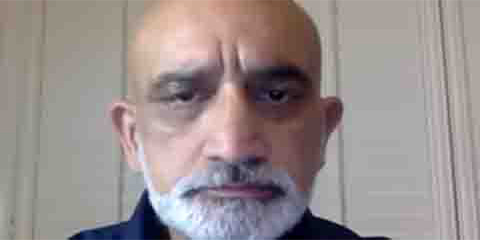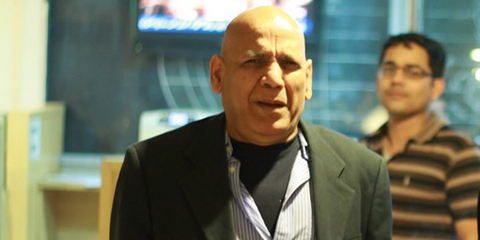AsiaOne: A shaky start for Pakistan’s newest news channel
JournalismPakistan.com | Published 3 months ago | Editorial
Join our WhatsApp channel
ISLAMABAD—The launch of a new television channel in Pakistan always generates curiosity. Viewers expect fresh competition to spark innovation, introduce bold voices, and diversify perspectives in an already saturated media market. When Asia One entered the field, anticipation was high. Many hoped it would bring a new dimension to Pakistan’s news culture. Instead, its early performance has revealed more confusion than clarity, and more imitation than originality.
Anchors Without Anchoring
One of AsiaOne’s most striking features is its choice of anchors. Several appear to have been recruited from overseas, presumably to give the channel an international edge. While the idea may sound attractive in theory, execution has been underwhelming.
These anchors often appear less grounded in Pakistan’s social and political context. Their presentation style feels stiff, their attire mismatched with local expectations, and most noticeably, their commentary sometimes struggles with names and context. Pakistani audiences, accustomed to sharp and culturally tuned presenters, find it hard to connect with anchors who seem unfamiliar with the country they are covering. Instead of elevating the channel’s profile, the imported talent risks creating distance with the very audience the channel seeks to capture.
News Without Direction
Beyond personalities, the channel suffers from a deeper issue: a lack of editorial focus. Its news bulletins move without a clear thread—jumping from regional developments to unrelated international stories and back again. A segment might cover South Asian politics, then leap to a NASA update, shift to African affairs, and return abruptly to domestic issues.
Such scattershot coverage unsettles viewers. People tune into Pakistani news primarily for local and regional updates; a global flavor is welcome, but it must be tied together with a coherent editorial narrative. Without that, AsiaOne’s coverage feels like a kite blown aimlessly by the wind.
When News Turns Into Talk Shows
Another challenge is the channel’s tendency to insert lengthy interviews into news bulletins. While interviews can enrich reporting, at AsiaOne, they often overshadow the headlines themselves. Updates that should take minutes stretch into prolonged discussions, disrupting the rhythm of the bulletin.
This blending of formats confuses audiences. Viewers expecting crisp, timely updates instead find themselves in extended conversations better suited to talk shows. The imbalance makes broadcasts feel poorly structured and diminishes the channel’s credibility as a news provider.
Jarring Documentary Interruptions
As if the lack of flow were not enough, AsiaOne frequently interrupts newscasts with unexpected documentaries. Sometimes the topic is space exploration; at other times, loosely related fillers. The abrupt cut-ins jar viewers, breaking the natural arc of a news broadcast.
Successful channels know that audiences value predictability. They want to know when to expect headlines, when to see debates, and when to enjoy special features. By inserting documentaries at random, AsiaOne gives the impression of weak planning and editorial disarray.
Branding Without Identity
Brand identity is another stumbling block. Observers have noted that AsiaOne’s logo, graphics, and even studio design closely resemble the style of a channel in Singapore.
Branding is not just decoration; it communicates vision and values. By borrowing so heavily from another network’s design language, AsiaOne risks forfeiting the chance to establish its own unique identity. For a newcomer trying to break into a competitive market, this resemblance undermines its credibility and suggests an absence of long-term strategy.
Can AsiaOne Find Its Footing?
In Pakistan’s volatile media environment, survival is never guaranteed. Viewers have a wide array of choices, from entrenched political channels to nimble digital platforms. To succeed, AsiaOne must urgently confront its weaknesses.
Staffing: Local audiences want anchors and reporters who understand their language, culture, and concerns. Investing in homegrown talent is essential.
Editorial Focus: The channel must decide whether it wants to be a Pakistani leader, a South Asian regional voice, or a globally oriented news outlet. Trying to be all three at once only breeds confusion.
Scheduling Discipline: News broadcasts need a consistent rhythm, with clear slots for headlines, interviews, and documentaries. Viewers reward professionalism with loyalty.
Authentic Branding: Copying global templates dilutes presence. A distinctive visual identity rooted in local culture but polished for modern sensibilities would help AsiaOne stand apart.
The launch of AsiaOne could have been a moment of fresh energy for Pakistan’s media industry. Instead, its first steps reveal misjudgments in staffing, editorial vision, and brand identity. Imported anchors who feel out of touch, fragmented coverage, unpredictable scheduling, and lookalike branding all point to a channel still searching for itself.
Yet, it is not too late. With course corrections—local talent recruitment, sharper editorial focus, disciplined programming, and authentic branding—AsiaOne could evolve into a credible voice. Unless those changes come quickly, however, it risks becoming a cautionary tale of how not to launch a news channel.
For now, AsiaOne offers more lessons for media managers than value for viewers. Audiences are discerning and spoilt for choice. To win them over, a channel must do more than imitate international models; it must connect, inform, and inspire on its own terms.

























